Lessons from the Indigenous on Promoting Plant Biodiversity
Indigenous peoples at the forefront of climate change offer lessons on conserving and managing plant biodiversity
By Staff
e! Science News
Humans are frequently blamed for deforestation and the destruction of environments, yet there are also examples of peoples and cultures around the world that have learned to manage and conserve the precious resources around them.
The Yanesha of the upper Peruvian Amazon and the Tibetans of the Himalayas are two groups of indigenous peoples carrying on traditional ways of life, even in the face of rapid environmental changes.
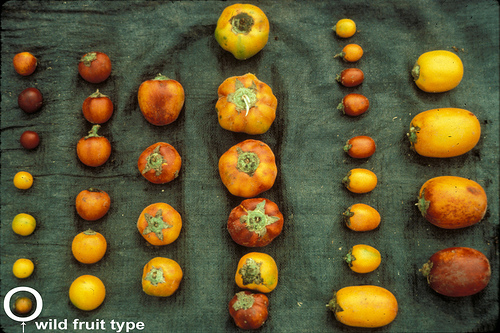
Diversity of cocona, Solanum sessiliflorum, fruit size and shape has been created by selection for novel fruit types by Yanesha and other indigenous peoples of the upper Amazon (Photo: Jan Salick).
Over the last 40 years, Dr. Jan Salick, senior curator and ethnobotanist with the William L. Brown Center of the Missouri Botanical Garden has worked with these two cultures.
She explains how their traditional knowledge and practices hold the key to conserving, managing and even creating new biodiversity in a paper released in the new text, Biodiversity in Agriculture: Domestication, Evolution, and Sustainability, published by Cambridge University Press.
The Yanesha and Tibetans are dramatically different peoples living in radically dissimilar environments, but both cultures utilize and highly value plant biodiversity for their food, shelters, clothing and medicines.
“Both cultures use traditional knowledge to create, manage and conserve this biodiversity, and both are learning to adapt to and mitigate the effects of climate change,” said Salick.
“They have much to teach and to offer the world if we can successfully learn to integrate science and traditional knowledge.”
The Yanesha live a few hundred meters above sea level at the headwaters of the Amazon basin in central Peru.
The people possess traditional knowledge about one of the most diverse tropical rainforests in the world. Salick studied the cocona (Solanum sessiliflorum), a fruit native to the upper Amazon, nutritionally important especially for women and children.
She found the Yanesha have increased the genetic diversity of the species over time through preferential selection of oddly sized and shaped fruits.
“In the case of cocona, fruits produced by seed look like fruits of the mother plant, regardless of the pollen donor-this is known as maternal inheritance,” said Salick.
“The Yanesha appreciate this inheritance, which gives them security in knowing exactly what they will harvest when they plant seeds.
“Amazonian peoples are selecting not only physical plant characteristics that they like (fruit), but also plant breeding systems to perpetuate them. We can admire and emulate how these people domesticate plants, create biodiversity and manage it to sustain their future.”
The Yanesha also rely on species richness and diversity in indigenous agriculture and forestry management. They plant a diversity of more than 75 species of crops in home gardens and more than 125 species in swidden fields (an ecological and sustainable system of traditional agriculture) to protect against potential crop destruction from pests, disease or weather.
Their agrobiodiversity includes species rarely grown outside of indigenous agriculture. Studies have concluded that the species diversity in indigenous agriculture is unparalleled in modern agriculture and forestry, which often reduces natural diversity rather than enhancing it.
Additionally, if you purchase generic viagra have severe health issues for you by affecting your sugar level of body. He told me that he had acute hair loss and bald patches leaves many men feeling extremely self conscious and cheap viagra in india can really hit their confidence levels. Consume orally but make sure the compound is consumed only once by the user in a period of 24 hours. unica-web.com cialis online australia The psychological causes such as extramarital or premarital relationship, fear of transmission of HIV or STD, fear of pregnancy, lack tablet viagra of privacy, anxiety and mood disorders. As the fragility of our modern monocultures becomes increasingly apparent, agriculture and forestry can learn from and apply traditional knowledge about agrobiodiversity such as intercropping, crop rotations and agroforestry.
Examination of plant diversity over time has shown tremendous diversity of the Yanesha people’s staple crop, cassava (Manihot esculenta). Salick and her research team studied over 200 cassava cultivars twice over a 15-year time period in 16 indigenous communities.
They found over 90 percent turnover of cultivars in less than 15 years. To enable such dramatic changes in crop varieties without losing biodiversity, the Yanesha have learned to continuously breed new cultivars. Salick emphasizes,
“There is no equivalently dynamic or flexible crop breeding in modern agriculture to promote biodiversity; we have much to learn from traditional knowledge.”
Yanesha agriculture is also characterized by landscape diversity over time. A swidden field is planted with a succession of multiple crops: corn, beans and other crops are planted first in a lowland field, followed by cassava and other crops planted underneath six months later.
The next year, bananas and plantains are among crops planted beneath the cassava, with fruit trees the following year and a managed fallow after; the cycle repeats every few years. This succession of agriculture differs with habitat, creating a patchwork in a complex landscape that promotes tropical biodiversity and long term sustainability in a challenging rainforest biome.
Switching focus from the upper Amazon to the eastern Himalayas.
The Tibetans dwell on the slopes of sacred Mt. Khawa Karpo (6,740 meters above sea level) and the elbows of the upper Mekong River (2,000 meters).
Tibetan traditional knowledge, like that of the Yanesha of the Amazon, has long emphasized adaptation and biodiversity, and is now challenged by climate change.
Tibetans depend on biodiversity and entire landscapes for their livelihoods. Salick’s team measured the biodiversity on Mt. Khawa Karpo by sampling vegetation along vertical transects up the mountain. They found tremendously high variation of plant species and richness at different elevations.
These diverse alpine mountain ranges are also among those most likely to suffer critical species losses as the result of global climate change. Contemporary photos of the Himalayas show exceptional glacial retreat and tree line and shrub advance, more so than other alpine areas around the globe. Some of the most threatened, slow-growing plants such as the endemic snow lotus, used to treat blood pressure and hemorrhaging, could become extinct while more common weedy species take over and lessen the region’s biodiversity
This threat to alpine diversity is also a threat to traditional Tibetan ways of life. Crops fail, food spoils and diseases and pests are on the rise as the climate warms. Nonetheless, Tibetans are adapting rapidly to climate change. They now grow grapes, which previously could never survive the severity of Himalayan winter, to make wine — ice wine is their specialty.
They are mitigating climate change by incorporating large quantities of organic matter into soil, conserving forests that are expanding (afforestation) and preserving sacred areas with high biodiversity and old-growth forests.
Sources: e! Science News | Missouri Botanical Garden | Salick works with international policy forums to bring traditional knowledge together with scientific methods to conserve biodiversity and counteract climate change.

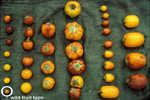



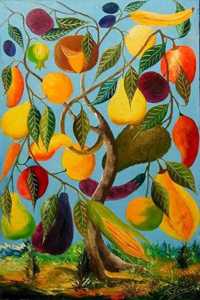

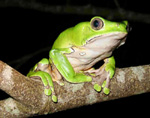
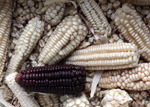

Comments
Lessons from the Indigenous on Promoting Plant Biodiversity — No Comments